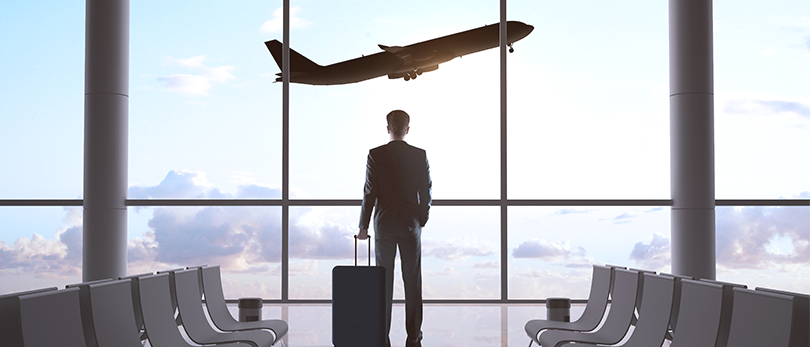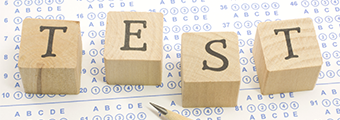How to overcome aviophobia or fear of flying
If you suffer from aviophobia, the excitement of a holiday on the other side of the world can quickly turn you off. The mere idea of having to take a plane makes you anxious because it represents a real ordeal for you to overcome. Don’t worry, today there are therapeutic solutions that allow you to quickly get rid of your fear of flying.

Fear of flying is a phenomenon that can be experienced very differently from one person to another
If you suffer from it, your anxiety may be particularly focused on the take-off phase, on the moment when you feel you are “falling” when the plane goes through turbulence, or on the fact that you feel trapped inside a space in which it is impossible to get out… Each person may thus perceive the same phobia in a very different way.
Fortunately, it is not necessary to know the origin of your fear to treat it. It is possible if you want to, but it takes a lot of time because of the multitude of factors to be taken into account. The time spent thinking about it may also cause you to brood and add to the anxiety already present.
Deconstructing false beliefs about air travel
Very often, fear of flying is based on mistaken beliefs stemming from a lack of understanding and knowledge of how aircraft work. The first step to better experience these trips, or even just to be able to consider them for long-distance travel, is to correct these distorted conceptions. Here are some very common misconceptions about aircraft that need to be deconstructed as soon as possible.
Making a call or sending a message from your phone on a plane will not cause an accident!
It is true that it is strictly forbidden to switch on a mobile phone. And this well-known ban is a real source of anxiety for aviophobes. On the one hand, the fact that it is forbidden to turn on your phone explicitly suggests that there is a real danger. On the other hand, if you can trust yourself not to turn on your mobile phone in flight, it is much more complicated to attribute the same trust to all those other passengers you don’t know. However, it is important to realise that even if your neighbour decides to switch on his phone despite the ban, it will certainly not have any impact. Phones, when making calls or sending messages, can possibly interfere with communication equipment, but to date there have been no accidents related to the use of a phone in flight.
Turbulence is not a sign that the aircraft is in trouble!
And no, when the plane enters a turbulent zone, it is just that on its trajectory, it encounters some variations in atmospheric pressure that cause air flows. This is harmless because, in reality, the plane moves very little and, above all, much less than the feeling you might have in the cabin. This is a phenomenon common to all travel and here again no crash has been caused by turbulence, even significant turbulence.
Depressurisation has nothing to do with what you see in the movies!
In the film, this phenomenon systematically corresponds to the partial or total destruction of the aircraft. In reality, the pilot only needs to descend in altitude to regain a satisfactory atmospheric pressure in the cabin. In the most severe cases, oxygen masks may be necessary. But remember that only an estimated 0.00005% of flights have a pressurisation problem.
It is impossible to open the door in mid-air!
This ties in with the last point. In the movies, it’s very easy to open the door of the plane and cause a depressurisation. But again, in reality, it is very different. Because of the pressurisation of the plane, a normal person cannot open the door in mid-flight.
CBT to treat aviophobia
Today, two techniques are widely used by health professionals to treat fear of flying. The first consists of giving you relaxation methods aimed at lowering your anxiety threshold before imagining the moments that are usually the cause of your fear. It is this initial desensitisation work in the imagination that will enable you to move on to the next phase: in vivo exposure.
This second technique allows you to gradually confront your fear. Using videos and recordings, the therapist exposes you to situations of boarding, take-off, aircraft instability and jet engine noises. Each exposure session should last until you have become familiar with all these stimuli and feel your fear disappear or decrease significantly.
Virtual reality exposure therapies
The evolution of technology now makes it possible to propose a new and effective solution for the treatment of aviophobia. This is virtual reality exposure therapy. This solution allows you to move from in vivo exposure to in virtuo exposure. Equipped with a visiocasque, you can then project yourself inside a plane entirely designed in 3 dimensions and expose yourself to a great variability of situations in their nature or their intensity (number of passengers, weather conditions, landing situation, etc.). All these parameters are entirely controllable from a computer. In this way, the therapist can better accompany you in managing your emotions and help you overcome your anxiety. Don’t worry, the exposure to the virtual situations is done in a very progressive way and the therapist makes sure that you have all the resources within you to succeed.


